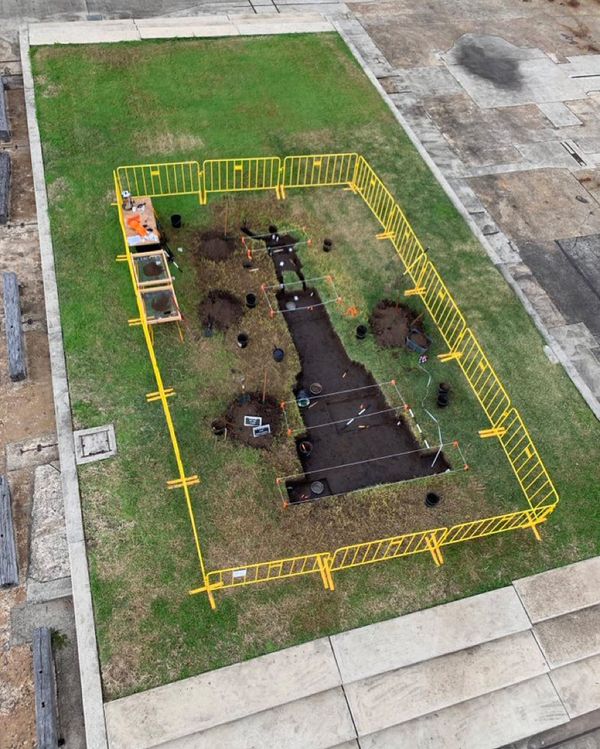Back in December 2015 I wrote several postings on incorporating the power of iconoclasm—the destruction of images—into historical monuments and commemorations.
Those thoughts were provoked by a talk by Wendy Bellion, author of Iconoclasm in New York: Revolution to Reenactment, who started with New Yorkers pulling down a statue of King George III after their first public reading of the Declaration of Independence.
Then, she noted, the city kept that plinth empty for decades, reenacted the destruction in ceremonies (which entailed creating new statues of George III), and collected and displayed the surviving bits of statuary. The remnants and recreations kept that destructive act and its meaning fresh in people’s eyes.
Incorporating the power of such iconoclasm is more than the one-time, permanent destruction of a statue or monument. It means finding a way to preserve the act of iconoclasm itself, thus recognizing the original object, the popular objections to it, and how society changed.
One of my favorite examples of this approach is in the Memorial Hall Museum in Deerfield, where updated cloth panels now hang over the original stone panels on a memorial to the 1704 raid on the town. Visitors can thus learn about that event, about how it was understood in the late 1800s, and about how we can view it today with added knowledge and multiple perspectives.
There are spontaneous examples of such iconoclasm, as when college students feathered a statue of Thomas Jefferson with Post-It notes registering their distaste with some aspects of his life. The result recognizes both Jefferson’s lasting importance and how he exploited other people. This year the plinth of the giant statue of Robert E. Lee in Richmond was likewise turned into an expression of community rejection of what Confederate general fought for.
Lasting iconoclasm can even be built into a monument from the start, as in the Saratoga Battle Monument, which has niches for four statues of American commanders but only three statues (of Horatio Gates, Philip Schuyler, and Daniel Morgan). Nearby is the Boot Monument, erected in 1887 in honor of an American general wounded in the Battle of Saratoga but never named on the stone. The missing man is Benedict Arnold, and the way he’s erased shows the national distaste for how he betrayed the Continental Army.
Vulture just highlighted another example of monumental iconoclasm from Australia, an outdoor exhibit that ends this weekend. This year is the Sestercentennial of Capt. James Cook’s first landfall on Australia. Statues of him have become controversial not so much for what he himself did on that continent but for the imperial conquest that his arrival launched and the idea that he “discovered” and “claimed” an already populated continent.
As a response to that 250th anniversary, Nicholas Galanin, an Alaskan artist, dug a hole in a field on Cockatoo Island (shown above) that matches the prominent statue of Capt. Cook elsewhere in Sydney. The work is called “Shadow on the Land.” It’s also a symbolic grave for the monument. This work certainly doesn’t celebrate Cook, of course, but it can’t help but acknowledge his historic significance. Imagine it dug permanently at the foot of the actual statue.
Closer to home, the city of Charleston removed its large statue of slavery advocate John C. Calhoun and more recently pulled down the towering pillar it rested on. Segments of the granite column buried themselves in the ground. I believe the city has already started moving those stones away, but I think for a moment the spontaneous ruin formed a more powerful monument to historical change than anything the city could build in that spot.
COMING UP: What do we do with a problem like Faneuil?


No comments:
Post a Comment